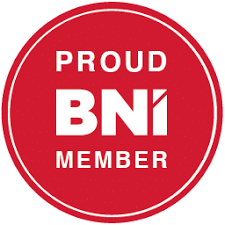One day, quite, by chance, when I first lived in Paris, I came across a magical chocolate shop nestled among the strip bars of Pigalle.
Tempted by the story-book vitrine, I pushed open the door. A bell tinkled and I was greeted by a grown-up Alice in her own chocolate wonderland. This was Denise Acabo, proprietress, famous for her girlish pigtails and her enthusiasm for the very best chocolate and candies, which she sourced from specialist makers all over France.
“What would you like, Madame?” she asked.
My eyes roved the glass showcases filled with jars of chocolate-covered coffee beans and candied orange slices, silver and gold almond dragées, pink and gold foiled bonbons and the row upon row of neatly aligned chocolate tablets in every flavour and variation: coffee, nougatine, praline.
The technique for making solid chocolate for eating was only invented in the mid-18th century.
Now – in the 21st century – there’s the Kalouga bar from Lyon; the epitome of chocolate pleasure.

I was not a natural chocoholic. “I don’t know,” I said weakly, “what would you suggest?” Denise pointed to a table laid with slabs encased in clear plastic wrappings.
She gave me a “Kalouga” bar.
“These are from a very good company in Lyon called Bernachon,” she told me. Sticky, softly, thickly, sweetly salty caramel enrobed in bitterly dark chocolate. It was richly, heavenly, wonderful. It was the best chocolate bar in the world.
Denise’s shop, A L’Etoile D’Or, was a favoured destination for Japanese tourists and American food bloggers and was the only place outside Lyon where you could buy Bernachon.
I soon learnt that if I wanted to buy my Kalouga bar, I had to get there on a Thursday, because that was delivery day. By Friday, they were all gone.
In 2010, I left Paris for four years. On the first Thursday after my return, I headed straight for A L’Etoile D’Or. I walked past the place, couldn’t see it, walked back more slowly. Was I mistaken? It was gone! Boarded up and covered in billboards.
DREAMS DASHED
A friend of mine who lived next door, told me that the shop had blown up in a gas explosion. “This is a catastrophe!” I wailed. “I know,” said my friend, “it damaged all the pipes in our basement …”
Over the next few months I tried to find a substitute. After all, Paris is full of fancy chocolatiers. I tried Richart, with their 36 flavours of ganache; but no caramel.
I tried Patrick Roger, where there’s a long queue every Easter for his extraordinary real egg shells lined in chocolate and filled with a cloud of exquisitely gritted praline mousse. Non. I went to Michel Chaudun, the enfant terrible of Parisian chocolatiers, famous for his enormous freeform chocolate sculptures, but the vendeur there shook his head.
I tasted a lime caramel chocolate jewel made by Jacques and Vanney Bellanger, and compared its zing with their pear drop Poire William caramel and the starburst of Johann Dubois’ strawberry poppy liquid caramel interior.
Yes, they were all delicately delicious; but they weren’t quite Kalouga.
So I went to Lyon. Philippe Bernachon is the third generation of chocolate-makers and he gave me a tour of his premises. He led me from the shop and showroom into the interior kitchens, past the patissieres balancing trays of millefeuille, until we came to the heart of the operation, the chocolate-making room. Philippe explained the process.
“First we sort,” he said as a man carefully picked out bark and leaves from a sack of Venezuelan beans. “Then we roast them … but not too much. They shouldn’t be too grilled, because then the taste is wrong.
“After this, the shells are removed and the beans crushed and mixed with sugar, cocoa butter, vanilla, and ground together … at the end it has the texture of mayonnaise.”
Chocolate-making is a tricky matter of fixing chocolate crystals within the right structure to form the best smooth melty consistency. The technique for making solid chocolate for eating was only invented in the mid-18th century.
Philippe described how the “mayonannaise-y” mulch is then “conched”, gently revolved in a tank warmed to between 45 and 50 degrees, for 40 hours, and finally “tempered”, before it can be poured into moulds. Then it is aged for three months. “Just like wine,” he said.
Philippe took me to the Bernachon cafe adjacent to the shop and treated me to a chocolate breakfast: two cups of hot chocolate, their best-selling Palet d’or chocolates and, Philippe’s personal favourite, the Almond Princess, a chic Marie Antoinette of a bonbon with a semi-liquid centre surrounded by almond praline.
I told Philippe about my quest for the perfect caramel bar since A L’Etoile D’Or had blown up.
“Denise was a force of nature!” he said fondly. I told him I had walked past the shop recently and it looked like some kind of work was going on inside.
“Yes, I talked to Denise just a couple of days ago. It’s true. She is going to reopen!”



